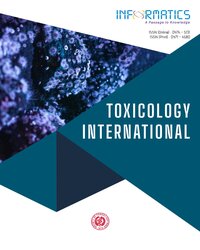Rерrotoxiсity profiling of Bisрyribас Sodium, Pinoxaden and Spinosad Pesticides on Drosoрhilа mеlаnogаstеr
Subscribe/Renew Journal
Present research exploration is attributed to reproductive toxicity evaluation of three synthetic agro-chemical pesticidal formulations viz: Bisрyribас Sodium, Pinoxaden and Spinosad, by implementing, test model, Drosophila melanogaster (2n=8). The target of present exploration is to evaluate reprotoxicity induced by selected pesticides. To accomplish the objectives of present research analysis, standardization of semilethal concentration LC20, had been considered by exposing second instar larvae to serial dilution of selected pesticides, for continuation of 24 hrs. Thereafter, considering co-relation between exposed concentration and mortality rate, exact values of LC20, had been calculated by probit analysis,which correspond to values 4.4 pl/ml for Sodium Bispyribac and 7.1pl/ml for Pinaxoden pl/ml for Bisрyribас Sodium, and 2 pl/ml for Spinosad. Subsequently, second instar larvae of fruit fly were exposed to sub lethal concentration, LC20 of selected pesticides, for 24 hrs, by means of nutrition, adding to culture medium. Afterward, larvae molted into imago in normal culture medium, which were allowed to cross mate in three separate experimental sets, in triplicate with respective negative controls. In first set, both pesticide exposed male and female cross-mated. In second experimental set, treated male and normal female flies were allowed to crossmate, whereas in third experimental set, pesticide exposed females were allowed to mate with normal males. After comparison of fecundity rate in all experimental sets with natural population, it had been concluded that selected pesticides induced statistical significant decrease in fecundity, when scrutinized by Z-test (p<0.05). Additionally, it had been analysed that the male fruit flies were more susceptible than female fruit flies to selected pesticides.
Keywords
Reprotoxicity, Bisрyribас, Pinoxaden Spinosad Drosophila melanogaster.
User
Subscription
Login to verify subscription
Font Size
Information



